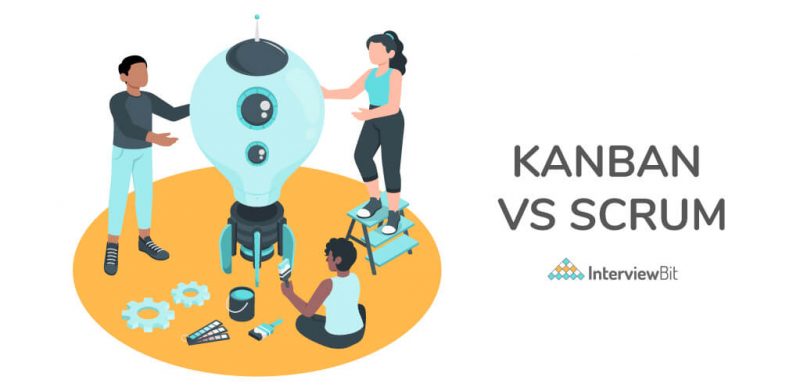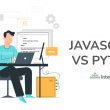How difficult would it be if this article did not have a proper structure? The summary is on top, the introduction is in the middle, and the actual content is at the end. What would be the first thing we do when we think of going on a week-long vacation? Structure and planning are primary parts of every process. It is important to be aware of the path that needs to be taken to achieve the target. People who work in the IT sector are the ones who deal with a lot of projects throughout their careers. There is a need to track the progress of a project, especially when the work is in a collaborative environment. This is where Agile methodologies come into the picture.
- What is Agile Methodology?
- What is Kanban?
- What is Scrum?
- Kanban Vs Scrum: Full Difference
- Similarities Between Scrum and Kanban
- Conclusion
- Frequently Asked Questions
- Q.1: How is Kanban different from Scrum?
- Q.2: Which should I choose? Kanban or Scrum?
- Q.3: Does Kanban have daily standups?
- Q.4: What does Kanban stand for?
- Additional Resources
What is Agile Methodology?
Agile methodology is a project management process followed by a Software Development Team or SDT. It aims at making collaborative work simple, efficient, and hassle-free. It follows a specific set of principles like customer satisfaction, flexibility to make changes in the desired product, incremental delivery of the product, face-to-face interactions, collaboration between stakeholders and developers, etc. Two salient agile methodologies that are followed by most of the Software Development Team are Kanban and Scrum.
What is Kanban?

Kanban is a visual management system that visualizes the status of the project. It represents the work to be done, the work in progress, and the work that has been completed. The primary objective of this process is to identify potential roadblocks, fix them, and work on the project at an optimal speed. Kanban allows minimal changes to the project in a continuous fashion leading to evolutionary changes. It helps in the quality usage of the time. It ensures that every member of the team sees the status of the project at any point in time. Every member can understand the complexity, risks, and time management through the board. However, the Kanban board does not give a completely optimized work as there is very minimal communication involved.
Confused about your next job?
Kanban: The Process
The Kanban board primarily contains fields for tasks like to-do, under process, under review, completed, etc., based on the project. The goal is to move all the tasks from to-do to completed in as little time as possible. Each task is raised as a ticket on the board, which can be assigned to any member of the team. The process is based on principles that are as follows:
- Visualization: Understanding the flow of the tasks from one end of the board to the other.
- Time limit: The time taken for the flow is cut down to a minimum.
- Focus: The process is centralized on the tasks that are in progress which helps in effective completion.
- Constant Improvement: Kanban board acts as the basis for round-the-clock improvement in the project.
Features
- Kanban delivers products faster by reducing the cycle time.
- Kanban is flexible towards changes.
- Kanban can be started at any point in time.
- Kanban reduces the wastage of time in the process.
What is Scrum?

Scrum is an agile process that helps in delivering the product in the shortest time. It involves repeated testing of the product. It prioritizes teamwork and the iterative progress of the product. Scrum makes the development team more agile and makes the team more decisive and responsive to sudden or unexpected changes. Scrum is a more transparent process. This allows the team to evaluate projects as there are fewer predictions and more practicality involved. There will be periodic Knowledge Transfers as people communicate very often. This method is used majorly when the conditions of the project are not very well known. It is very flexible towards changes.
Scrum: The Process
Communication is a vital part of Scrum. It involves regular meetups that are called events that have a fixed period of time without any alteration. The scrum team consists of developers, product owners, and a small set of developers. The Scrum Master acts as the pivotal point of contact and ensures that the process is feasible.
- Daily Scrum/Stand-Up: This meeting or stand-up happens every day at a fixed time. The members come together and give updates with regard to their work and share the obstacles they are facing. The team reviews the work of the day and plans for the next day.
- Sprint Planning Meeting: Sprint is a period in which work has to be completed. Generally, each sprint is of 30 days, but it changes as per the project requirement. A Sprint Planning meeting is where the team sets a target for the next 30 days keeping a major milestone to achieve for the project.
- Sprint Retrospection: Retrospection happens at the end of every sprint. The team reflects on the shape of the project since day one of the sprint. Reflection of the process shows how it can be altered in the upcoming sprints to avoid common blockages. Once done, the team goes back to the planning of the next sprint, and the cycle continues.
Features
- Focuses on producing a value-rich product for the consumer at the end of the sprints.
- Involves repeated and rapid review of the product.
- The product owner sets the goals for a sprint.
- Adjusts to the market and rapid changes in priorities.
- The team is self-organizing and self-managing. They aim to produce the product within a given time frame.
Kanban Vs Scrum: Full Difference

| Scrum | Kanban |
| In Scrum, the team sticks to the planning in the sprint. The decisions made in the sprint meetings hold good until the retrospection. | Kanban takes changes on the go. |
| The retrospection goes based on time managed and taken per task. | The reviews happen based on graphs |
| Every individual has their roles and responsibilities. | No roles are set and thus every member is free and flexible to pick up tasks throughout the project. |
| Sprint durations are fixed. It varies from 2 weeks to 4 weeks. | Kanban is not based on duration. |
| Teams are supposed to commit a few hours every day throughout the sprint. | There is no need for time commitments. |
| Cross-functional teams make it easier to solve roadblocks as there is frequent communication. | A specialized team is necessary. |
| Adding tasks in between the sprints is not possible. | New tasks can be added at any point in time. |
| Sprint log is owned by specific teams. | Different teams can share Kanban boards among themselves. |
| The product is delivered after the retrospection and review. | The product is delivered continuously and hence testing and production happen simultaneously. |
| Roles are set by the scrum master and goals are set by the project owner. The team members are involved in the development. | No roles are set but the team is led by a project manager who motivates the team. |
| The method is best suited for projects with varying priorities. | The method is best suited for projects with stable priorities. |
| In case of a problem, Scrum Master is the problem solver. | Every member is allowed to pick up a problem and solve it. |
| If a team member leaves in between a sprint, it will not disturb the process. | If a team member leaves in between, it disturbs the flow of work. |
| Daily standups could become cumbersome in some cases. | Outdated Kanban boards might cause difficulties. |
| Large projects can be broken down into smaller parts through sprints. | Suitable for smaller projects that require continuous production. |
| Production is measured through the velocity of the sprint. | Production is measured through the cycle or time taken to finish the project. |
Similarities Between Scrum and Kanban
- Both Scrum and Kanban are agile methods.
- Both methods aim at reducing the work in progress. Scrum at the sprint level and Kanban at the task level.
- Both Scrum and Kanban are transparent. However, Scrum is relatively more transparent.
- Both aim to produce the product at the earliest.
- Both methods involve self-organizing teams.
- Both methods involve breaking the project into smaller pieces.
Conclusion
In day-to-day work, organizing plays a significant role. These two agile methodologies are proven to be one of the best to optimize and be productive. Scrum as said is best suited for big projects and Kanban for smaller ones. All the top companies use these techniques in every project they undertake. While Scrum and Kanban are two different techniques, both of them can be integrated to make work-life much easier.
Frequently Asked Questions
Q.1: How is Kanban different from Scrum?
Ans: Kanban involves the usage of Kanban boards that consist of columns. The goal is to optimize and limit the time of a project by breaking and moving tasks across the boards. Scrum works based on sprints. It involves regular standups to check on the status of the project.
Q.2: Which should I choose? Kanban or Scrum?
Ans: It depends on the project that you intend to work on. If the project is small and production happens in cycles, Kanban would be better. If the project is bigger then Scrum is the option. Nevertheless, you can use both of them on a single project.
Q.3: Does Kanban have daily standups?
Ans: No. Kanban does not mandate daily standups. Depending on the project type, the project manager can decide if it is necessary or not.
Q.4: What does Kanban stand for?
Ans: The word Kanban comes from Japanese which means a visual sign or card. It is an agile visual system method for managing workflow.




